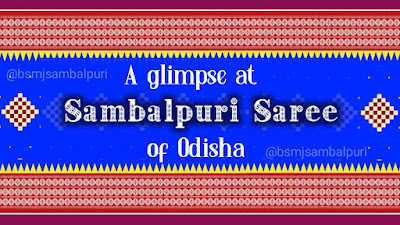Sambalpuri saree is a traditional handwoven saree hailing from the state of Odisha, India. These sarees are renowned for their intricate weaving patterns, vibrant colors, and traditional motifs, making them a favorite among fashion enthusiasts and saree lovers alike. Let's delve deeper into the origins, weaving techniques, designs, and popularity of Sambalpuri sarees.
History and Origins:
Sambalpuri sarees have a rich history and have been a part of Odisha's cultural heritage for centuries. The name 'Sambalpuri' is derived from Sambalpur, a district in western Odisha, where these sarees were traditionally woven. The weaving of Sambalpuri sarees has been an integral part of the lives of the Bhulia community, who are the primary weavers of these sarees. Some cities like Sambalpur, Bargarh, Barpali, and Balangir are a few of the cities popular for making Sambalpuri saree.
Weaving Techniques:
The process of making a Sambalpuri saree is a labor-intensive one, and it involves several stages of weaving and dyeing. The yarn used in making these sarees is usually cotton or silk, which is first dyed in natural colors like indigo, turmeric, and madder root. The yarn is then spun into threads and woven into a fabric using traditional handlooms.
Sambalpuri sarees are handwoven using the 'bandha' technique, also known as the 'tie and dye' technique. The process involves tying small portions of the yarn with threads and then dipping the fabric in different colored dyes. The tied portions of the fabric resist the dye, creating intricate and unique patterns. These patterns are then woven into the saree using the traditional pit loom, which is operated manually. The process of 'Bandha' is time-consuming and requires a lot of skill, as each knot has to be tied with precision to create the desired pattern.
Designs and Motifs:
Sambalpuri saree design is very tricky. Sambalpuri sarees are known for their vibrant colors and intricate designs. The sarees feature various traditional motifs such as flowers, birds, animals, and geometric shapes, which are woven into the saree using the 'bandha' technique. Each Sambalpuri saree is unique and reflects the weaver's creativity and skill. Some Sambalpuri saree is made with silk.
Popularity:
Sambalpuri sarees have gained immense popularity in recent years, not just in India but also internationally. The popularity of Sambalpuri sarees has also given a boost to the local weaving industry, providing employment to thousands of weavers and artisans in Odisha. They are worn by women of all ages and are a preferred choice for occasions such as weddings, festivals, and other traditional events. The comfort, durability, and elegance of these sarees have made them a favorite among women of all ages.
Nowadays, you can order Sambalpuri Saree online also. There are many sites which are selling beautiful Sambalpuri saree in the range of 5000.
Conclusion:
Sambalpuri sarees are an integral part of Odisha's cultural heritage and are a testament to the skill and creativity of the Bhulia community. The intricate designs and vibrant colors of these sarees have made them popular among fashion enthusiasts and saree lovers worldwide. They are not just a piece of clothing but are a representation of the rich cultural heritage of Odisha. Whether worn for traditional events or casual outings, Sambalpuri sarees are a timeless fashion statement that will always remain in vogue.

.jpg)









